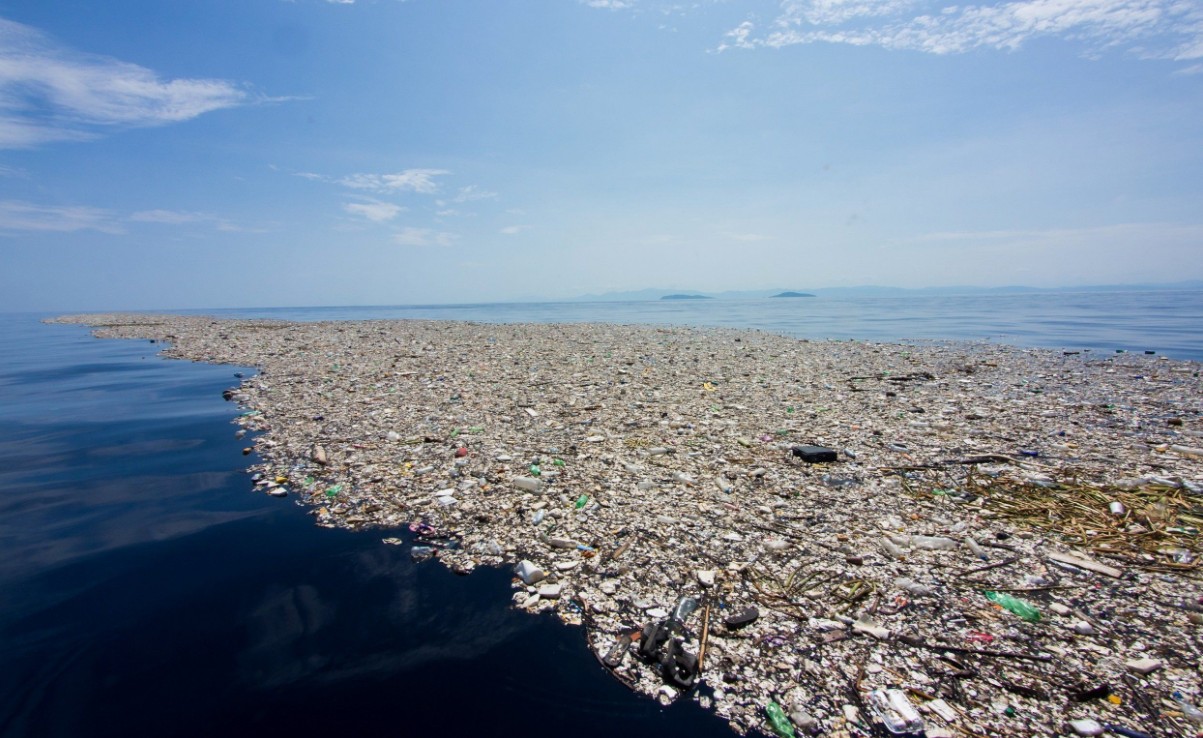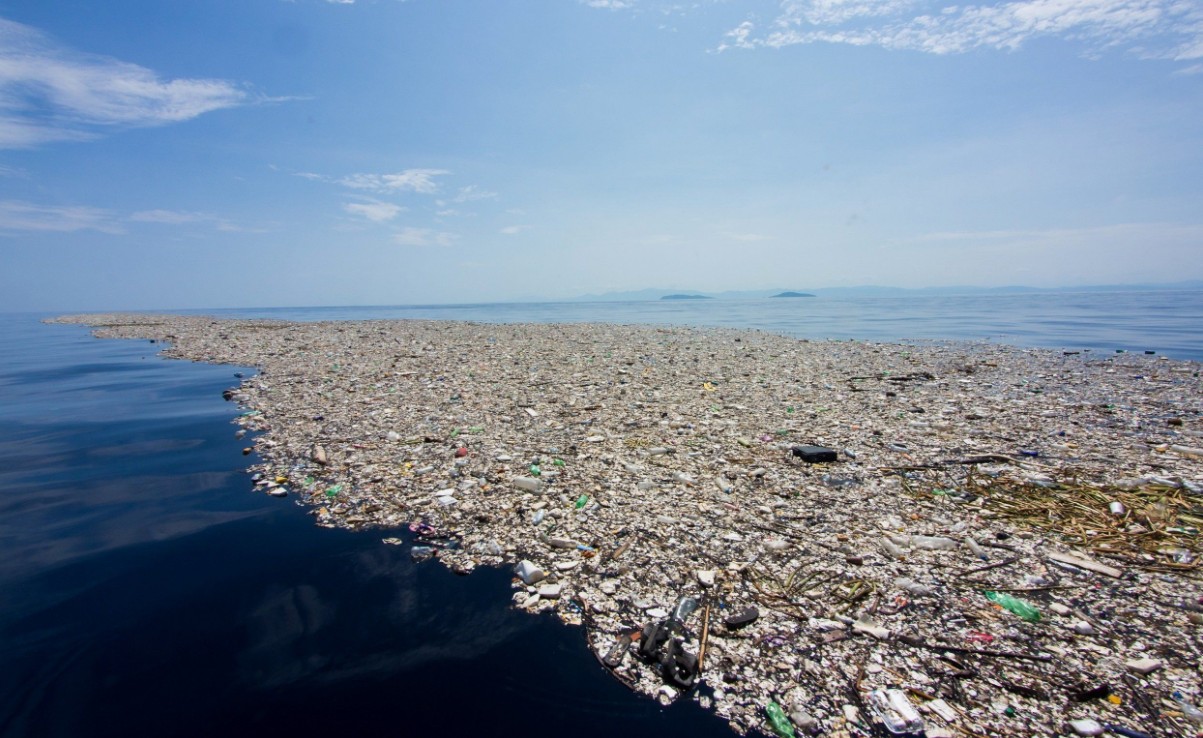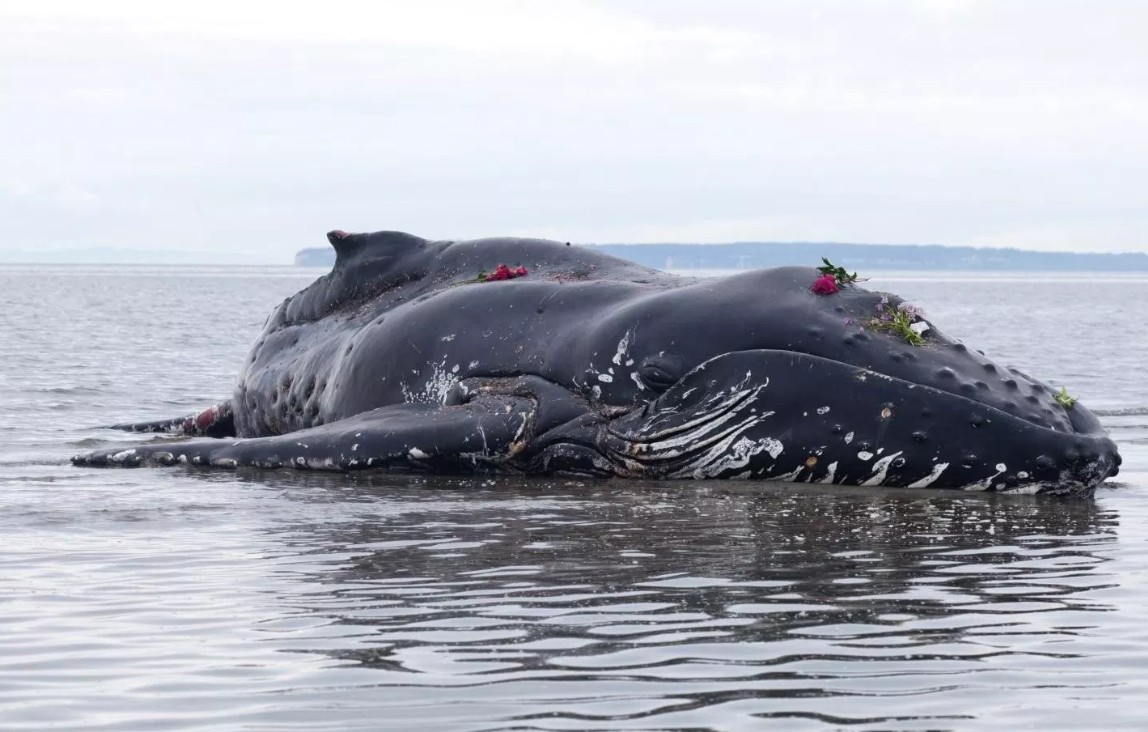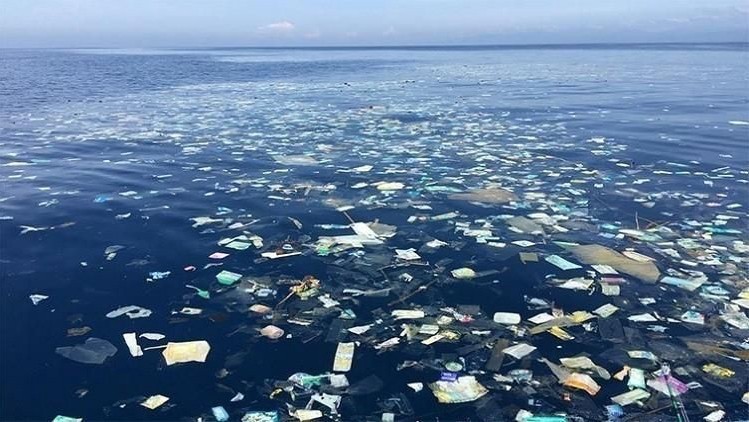
A proposed plastic ban comes as our disposable, hyperactive lifestyles demand unsustainable convenience
“Thrift is poetic because it is creative; waste is unpoetic because it is waste.” – G.K. Chesterton, What’s Wrong with the World
Chesterton was a stuffy Victorian who knew mankind was capable of reinventing ways to destroy itself.
He said if a man could make use of all things in his dust bin, he would be a broader genius than Shakespeare.
He was one of the first to sing the praises of recycling.
He couldn’t, however, foresee our wasteful future, driven by a proliferation of plastics.
Yes, this petroleum-based product is almost unrecyclable.
Oceans cover about 70 percent of the earth’s surface and they act as a gigantic absorption system for the sun’s radiation. Our oceans mediate the amount of heat in our atmosphere and help determine weather and temperatures above land. The movement of water in massive flowing oceanic systems, dictates the temperatures and weather that move across our planet. Because of human activity, including the industrial-scale of plastic pollution, the temperature and chemical composition of our oceans are being dramatically and dangerously altered, with planetary consequences for climate change, weather disruption and the loss of lands and species.
More and more plastic is getting into the ocean, either from direct dumping or from inland waterways polluted by plastic products and from a variety of waste systems that deposit plastics along with other particles that eventually end up in oceans. Incredibly small micro-particles found in everything from our clothes to personal care products also contain plastics that eventually get washed into our water and sewer systems and then find their way into oceans.
Consider these statistics on plastic: the world produces 300 million tons of it every year, and 50 percent of it is for single-use purposes – bottled water or grocery bags or food wrappers utilized for a few fleeting moments, then discarded and buried in a landfill site where it will take several hundred years to break down. A recent study said more than 8 million tons of it is dumped into our oceans every year. You’ve probably seen images or heard of the Great Pacific Garbage Patch, now larger than the state of Texas? It’s enough to make you cry bitter tears for this planet.

This small garbage patch is nothing like the Great Pacific Garbage Patch, which is larger than Texas
Sea Shepherd Conservation Society (established in 1977 to end the destruction of habitat and slaughter of wildlife in the world's oceans in order to conserve and protect ecosystems and species) was founded by Canadian-born eco-warrior Paul Watson of Greenpeace fame. He has said: “Scientists warn that in 2050 there will be more plastic in the oceans than fish in the sea. Sea Shepherd is committed to preventing this from happening – because if the oceans die, we die.”
This ominous quote is backed up by more startling statistics:
• every day approximately 8 million pieces of plastic pollution find their way into our oceans;
• there may now be around 5.25 trillion macro and microplastic pieces floating in the open ocean – with the surface particles weighing up to 269,000 tons and an incomprehensible 4 billion microscopic plastic particles per square kilometre below the surface; and
• plastics consistently make up 60 to 90 percent of all marine debris studied.

A humpback, was one of thousands of whales killed by ingesting plastic
The amount of plastic littering the world's oceans is expected to triple within a decade, and a new UK government report warns that 70 percent of marine litter is now non-degradable plastic.
If that’s not alarming enough, the WWF (formerly the World Wildlife Fund) says mankind might be eating a credit card’s worth of microplastic every week, thanks to the widespread contamination of drinking water and seafood.
It’s still unclear how this consumption will affect our health, but here’s a clue: simply Google “whales” and “plastic” and watch as one vomits up five plastic bags before it dies. Then grimace through an autopsy as ecologists pull 80 plastic bags out of another’s stomach. Those unseen microplastics — small particles from larger fragments — now join our eco-lexicon along with sprawl, gridlock, and greenhouse gases. The words are endless – as is the problem we now face.
This proliferation of plastic is one of the starkest spinoffs from our consumer society.
Packaging is the largest end-use market segment of plastics, accounting for just over 40 percent of total usage. About 500 billion (that’s with a ‘B’) plastic bags are used worldwide – or about one million (that’s with a ‘M’) per minute. These bags have an average “working life” of 15 minutes.
Over the last decade we have produced more plastic than during the entire last century.
Remember the three R’s: reduce, reuse, recycle?
Plastic seems immune to all three. Even if it can be recycled, it leaves behind killer compounds.
Last week the Trudeau government announced it’s banning single-use plastics by 2021, and issued a threat that it would take unspecified steps to further reduce plastic pollution.
The Prime Minister didn’t specifically name products to be banned, but a good guess is plastic bags, water bottles, straws, cutlery, plates and stir sticks, “where supported by scientific evidence and warranted.”
He said he was having a tough time explaining to his kids why dead whales were washing up on beaches across the world with their stomachs jam packed with plastic bags.
"How do I tell them that against all odds, you will find plastic at the very deepest point in the Pacific Ocean?,” he said.
With the longest coastline in the world (202,080 kilometres) that’s a big problem for this country.
It’s also hard to do nothing when 60 other countries are taking steps to reduce single-use plastics by imposing bans or taxes, according to a United Nations report issued last year.
Trudeau said Canada recycles less than 10 percent of its disposable plastics, and could throw away $11 billion worth of disposable plastic in the next decade, if things don’t change.
While critics argue that the Ottawa initiative is nothing but a pre-election stunt that will hopefully distinguish the Liberals from the Conservative Party of Andrew Scheer, Trudeau said he supports his minister of environment Catherine McKenna’s push to create a nationwide strategy for zero plastic waste.
The UN report (Single-use Plastics, A Roadmap to Sustainability) is a striking document, filled with dystopian pictures and pie charts, and killer stats, and it blames irresponsible individual behavior, and slip-shod waste management systems, for the mess we’ve created.
The darkest of the stats conclude:
• Plastic bags and styrofoam containers can take up to 1,000 years to decompose.
• According to 2015 estimates, 16 of the top 20 countries contributing to marine plastic litter are middle-income countries, whose economic growth is outpacing waste management infrastructure development.
• In developing countries with inadequate solid waste management regulations, plastic bag litter can aggravate pandemics.

Plastics: A history. And the Movie
The UN Report states that since the 1950s, growth in the production of plastic has largely outpaced that of any other material with a global shift from the production of durable plastics to single-use plastics, including packaging. The production is largely reliant on fossil hydrocarbons, which are non-renewable resources. If the production continues at the current rate, by 2050 the plastics industry may account for 20 percent of the world’s total oil consumption.
But we were warned this was coming. In 1967, at the height of the counter-culture revolution, the use of plastic knives and forks and straws was still in its infancy. Parents still brown-bagged their kids’ lunches and shoppers packed up their purchases in paper bags, too. A six-pack of razorblades wasn’t hermetically sealed in a plastic package that took a half-an-hour to open. This was Eden before the fall.
But consumers wanted convenience. It was the beginning of the fast-food era. There was a need for speed, and we were willing to pay for it.
A new movie opened that year and a small snippet of dialogue from it (one of the most famous in movie history) seemed to capture the zeitgeist.
The plot of The Graduate revolved around Benjamin (Dustin Hoffman), a recent college graduate who was seduced by Mrs. Robinson, the wife of his father's business partner. As they embark on their affair, he grows more disillusioned by the grown-up world of his parents and their expectations for him. It’s all neatly captured when he attends a party and begins a dialogue with a businessman/friend of the family who offers him some advice on his future job prospects.
Mr. McGuire: I want to say one word to you. Just one word.
Benjamin: Yes, sir.
Mr. McGuire: Are you listening?
Benjamin: Yes, I am.
Mr. McGuire: Plastics.
Benjamin: Exactly how do you mean?
Mr. McGuire: There's a great future in plastics. Think about it. Will you think about it?
Benjamin never does. No one was really thinking about it back then – except those looking to turn a profit. Yes, Mr. McGuire was right. Plastics was synthetic, lightweight but strong, and cheap. It could be used for everything from straws, to pens, to patio furniture, to the fake grass to be used later in domed stadiums. It could be the bubble-wrap thrown around giant skids of goods that would be secure as they were delivered all over the world. Even plastic flowers would replace the real things.
Mother Nature groaned, and groaned even more when water – free, fresh, odourless water – was later placed in plastic bottles and sold as a commodity. There are now so many, it makes counting meaningless. Many of them find their way into our landfills and waterways. Annual consumption of plastic bottles is set to increase 20 percent by 2021, far outstripping recycling efforts and jeopardizing oceans, coastlines and other environments.
The petroleum industry, which has infested our atmosphere with co2 gases, has created even more havoc by feeding off of this plastics boom. The world is left searching for solutions.
It’s early morning and early May in a conference room at the Hilton Garden Inn in Brampton and Mike Schreiner (MPP Guelph), head of the Green Party of Ontario is speaking before business leaders from the Board of Trade. For the first time his party has a seat at Queen’s Park. He is preaching that social responsibility through a new clean and green industrial movement will rule the business world of the future, and everyone should be eager to jump on board. Instead of being met with resistance when he says polluters will have to pay for their abuse of the planet, he gets a rousing round of applause.
Bradam Energies, located on the Oakville-Mississauga border, had a representative at the BBOT breakfast. The company has cutting-edge technology to turn all kinds of products (including plastic) into power. Its Carbon Energy Recovery process can safely and efficiently process non-recyclable plastics and convert it into electricity and synthetic natural gas for homes and businesses. It can also produce large quantities of hydrogen which can be used in fuel cells to power automobiles and support the electric grid. It is even working on a process that can produce the raw materials used to produce plastics from non-recyclable plastics creating a circular economy using waste to produce new products without needing fossil fuels.
Schreiner’s presentation was a taste of the future and the new green business sector which he hopes will soon become mainstream – driven by a planet in desperate need of help. This new business ethos has embraced technology to fuel these massive changes.
For example, Americans purchase 346 plastic bottles (per person) each year, and only 9 percent of plastic trash can be recycled. The African continent has the largest number of countries that have instituted a total ban on the production and use of plastic bags, and at the local level, New York City has eliminated single-use Styrofoam containers. In short, the world is rethinking its plastic economy.
Brampton Grow Green, the City’s first Environmental Master Plan (EMP), is about sustainability. It wants to identify what the city does well, and the gaps and opportunities to change municipal operations and service delivery, and to establish sustainable directions – including actions and targets that will improve Brampton’s built and natural landscapes. Industries, seniors, environmental groups, community associations, schools, students, families, professional organizations, and many others all have roles to play in helping to achieve the city’s goals, states the mission statement. The EMP is touted as a living document that will evolve in the future.
Meanwhile, in practical terms, over 80 companies here are plastics manufacturers. They run the gamut, from mold makers, to packagers, to film makers that wrap around food products. These companies are big and small and hire hundreds of workers, and include firms like Brampton Engineering on Dixie Road, which for 45 years, has been a leader in new blown film solutions with expanded die technology, integrated control systems, water quenched, superior extrusion technology to serve food and beverage, medical, personal care, health and beauty, retail and agricultural industries. Bramalea Bottle Inc. on Westcreek Boulevard is another. It has been around since 1994 and manufactures blow molded plastic products to a variety of customers in sectors like cosmetics, food and drug, nutraceuticals, household cleaners, automotive aftermarket, lawn and garden and industrial packaging. Wollin Canada on Williams Parkway makes molds.
Retailers, restaurants and fast food outlets also use many plastic products – finding a holistic approach to cut down the use of plastics, might get complicated.
Turning trash to power
The Region of Peel (whose future is very much in doubt due to possible changes to the governance model by the province) was once a leader in turning trash into power. Its 20-year lease with Algonquin Power Energy-From-Waste (since re-named Emerald Energy from Waste) facility (Bramalea Road and the 407) to incinerate most of Peel’s solid waste and turn some into power, was so progressive, delegations from around the world used to visit the plant to see how it was done. But by a majority vote in regional council, the contract with Algonquin was severed in 2012, and the region returned to hauling waste in trucks to a landfill site near London. The region said a new thermal conversion plant would be built and operational by 2021, but that plan is still a work in progress. Emerald Energy continues to secure trash from other municipalities.
The talk of a new-style, region-owned incinerator is just that – talk. Garbage-laden trucks spewing co2 gases now fill the roads to London. Gone is this region’s reputation as an eco-friendly model of waste disposal efficiency.
While the No. 1 action plan in Brampton’s Vision 2040 focuses on the environment, and council voted to unanimously last week to declare a “climate emergency” in the city, its action to support a potential 400-series highway on our border, seems at odds with its intentions to embrace green – and lower its co2 emissions levels in the future.
The movement to a greener planet is being fought out at all levels of government and might become a key election issue when a federal vote is held this October.
The Federal Green Party has two elected MPs on Parliament Hill, including leader Elizabeth May. There’s talk of a breakthrough in the upcoming election, and CBC News says the election of Paul Manly in a by-election in Nanaimo-Ladysmith in early May, might be a precursor of things to come.
A recent poll conducted by Abacus Data shows the party sitting at just under 10 per cent of support nationally, an unprecedented high-water mark. The Greens have seen provincial breakthroughs in British Columbia, New Brunswick and Prince Edward Island, winning enough seats to hold the balance of power in minority legislatures. Schreiner is the first Green to hold office in Ontario, and some call him a lone voice against the pro-business (anti-environment) party in power, led by Premier Doug Ford – hardly a proponent of going green.
His proposal to open-up The Greenbelt for possible development was met with intense public protests at the end of last year. But recent changes to the planning process to open up lands to future single-family home development, sends out a clear message that Place to Grow legislation (“Smart Growth”) introduced over a decade ago to stop sprawl, and check gridlock, have taken a backseat to a new land-use plan based on an old model.
In the Abacus poll, May had the highest positives of any federal leader, and “some of the fundamentals that might help propel the Greens forward and make historic gains.”
Schreiner told the Brampton crowd, the movement to a Green solution is based on the fact the planet is in such peril and “there is no Plan B. We don’t have a Planet B to escape to,” he said.
The good news, solutions are on the way.
A waste-free store in Waterloo offers silicone, bamboo and metal straws as a reusable alternative to a plastic straw.
The plastic bag is being replaced by reusable carry bags, and even in Calgary, the heart of the petroleum industry, Kate Trajan, leader of strategic planning and policy with the city’s waste and recycling services, says a new single-use plastic strategy will be unveiled next year.
Sure, there is resistance from the Chemical Industry Association of Canada, and the business world is slowly warming to the idea of turning garbage (including plastics) into a clean and green power.
While Bradam’s technological innovations are one of the possible solutions, the firm is partnering with academia at the local post-secondary school level to support a curriculum that prepares students for careers in environmental services. This might be its most lasting legacy.
It’s also time the public embraced inconvenience.
Every consumer who lines up for a double-double coffee in the morning should stop and think before tossing his or her cup into the garbage. It will take about 300 years for it to decompose. Same thing with that plastic bottle of water, except it will need at least an additional 150 years before its harmful particles are properly broken down.
There’s a clear need for the public, business, and politicians to come together to create a plan that eliminates co2 gases, single-use plastics, and spurs a dialogue that speaks for the trees, the land, the oceans, and the whales – especially our poor, dying whales.
Submit a correction about this story


